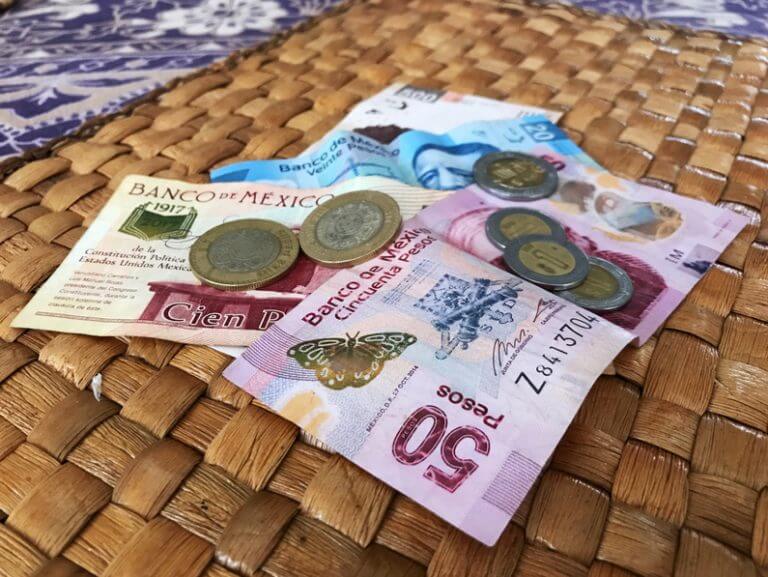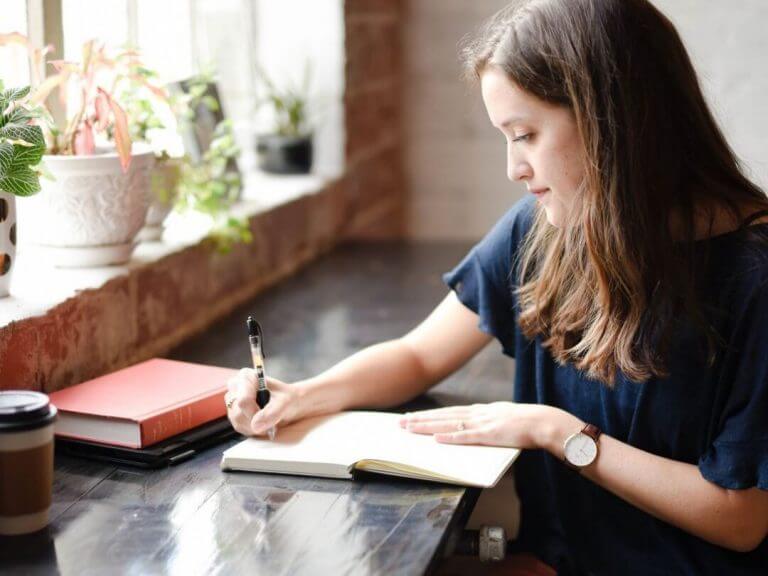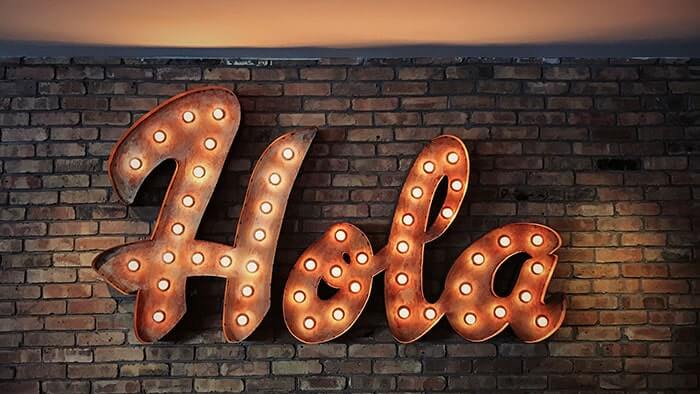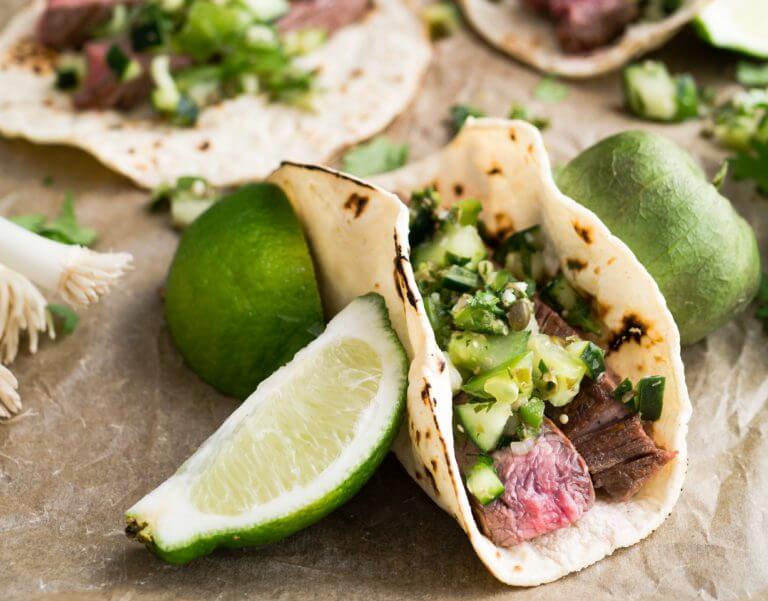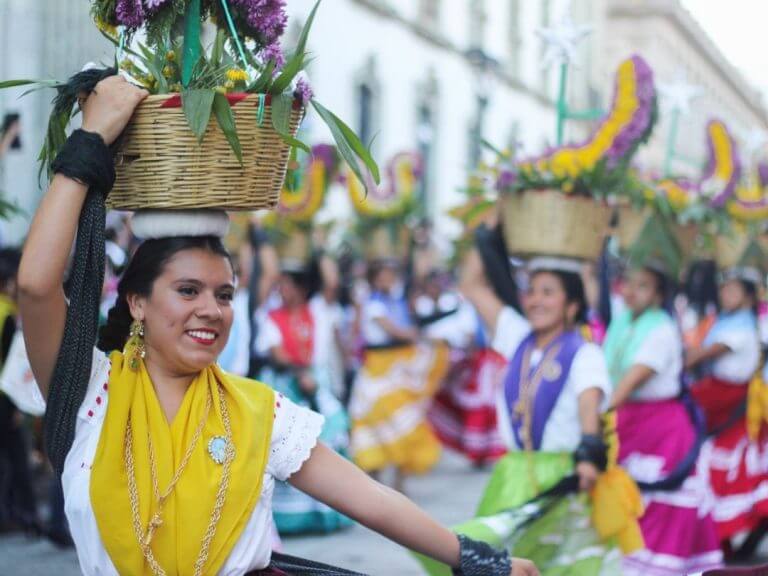Day of the Dead Motifs: A Colorful Celebration of Life and Death
This post may contain affiliate links. Read my Disclosure & Privacy policies for more detail.
Day of the Dead is a Mexican holiday used to pay tribute to loved ones who have passed away. This colorful holiday incorporates many different motifs. Here’s a look a the different Day of the Day symbols and their meanings.
Editor’s Note: This is a guest post by Dani Ramos. Dani is a travel blogger and content creator from Mexico City. She traveled the world extensively while writing for her blog, No Hurry to Get Home, before deciding to move back to her hometown.
If you’ve ever seen colorful skulls and skeletons adorned with flowers and intricate designs, you might be familiar with the Day of the Dead motifs. The Day of the Dead (also referred to as Día de Muertos) is a Mexican holiday that takes place on November 1st and 2nd.
It is observed as a way to pay tribute to and commemorate friends and family members who have passed away. The holiday is a combination of pre-Hispanic indigenous customs and Catholicism, which is reflected in the symbols and themes used in Day of the Dead festivities.
Traveling soon? Don’t forget to buy travel insurance for Mexico. Insurance gives you peace of mind, knowing you can get the help you need if anything goes wrong. SafetyWing is the provider that I recommend.
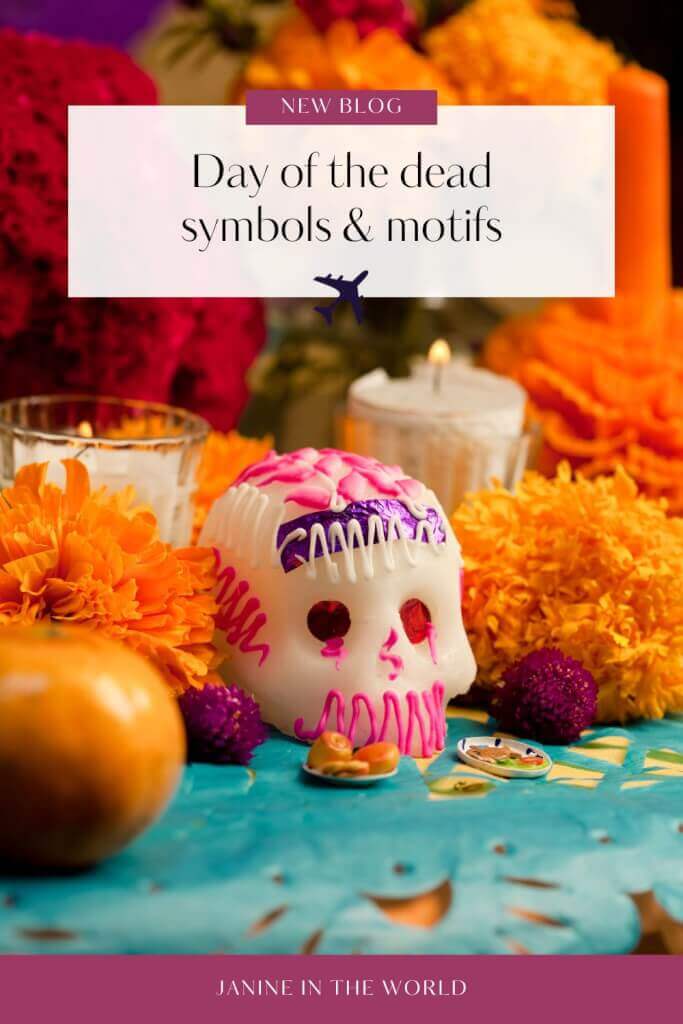
Origins of Day of the Dead
Day of the Dead has become popular worldwide thanks to movies like Coco and the Book of Life, but where does this tradition come from?
Day of the Dead is a holiday that originated in Mexico and is now celebrated in different variations across Latin America and other regions. The occasion serves as a way to pay tribute to and commemorate those who have passed away, and it is observed on November 1st and 2nd, coinciding with the Catholic holidays of All Saints’ Day and All Souls’ Day. It is not the Mexican version of Halloween.
November 1st is referred to as Día de los Angelitos and is dedicated to honoring the spirits of children who have passed away. November 2nd is called Día de los Difuntos and honors departed adults.

The beginnings of Day of the Dead can be traced back to pre-Columbian eras, when the native communities of Mexico had a custom of paying respect to their deceased loved ones by presenting them with food and other offerings. Following the Spanish conquest of Mexico in the 16th century, Catholic traditions were introduced, and the native traditions were combined with Christian beliefs to form the present-day holiday.
These days, Day of the Dead is celebrated with vibrant altars, known as ofrendas, which are adorned with marigold flowers, candles, and offerings of food and beverages. The festivities also feature parades, music, and dancing, along with the crafting of sugar skulls and other decorative items. Below we’ll take a look at some of the most common Día de Muertos symbols and their meanings!
📚 Related Reading: 20 Fascinating Mexican Holidays and Traditions
Day of the Dead Motifs and Symbols
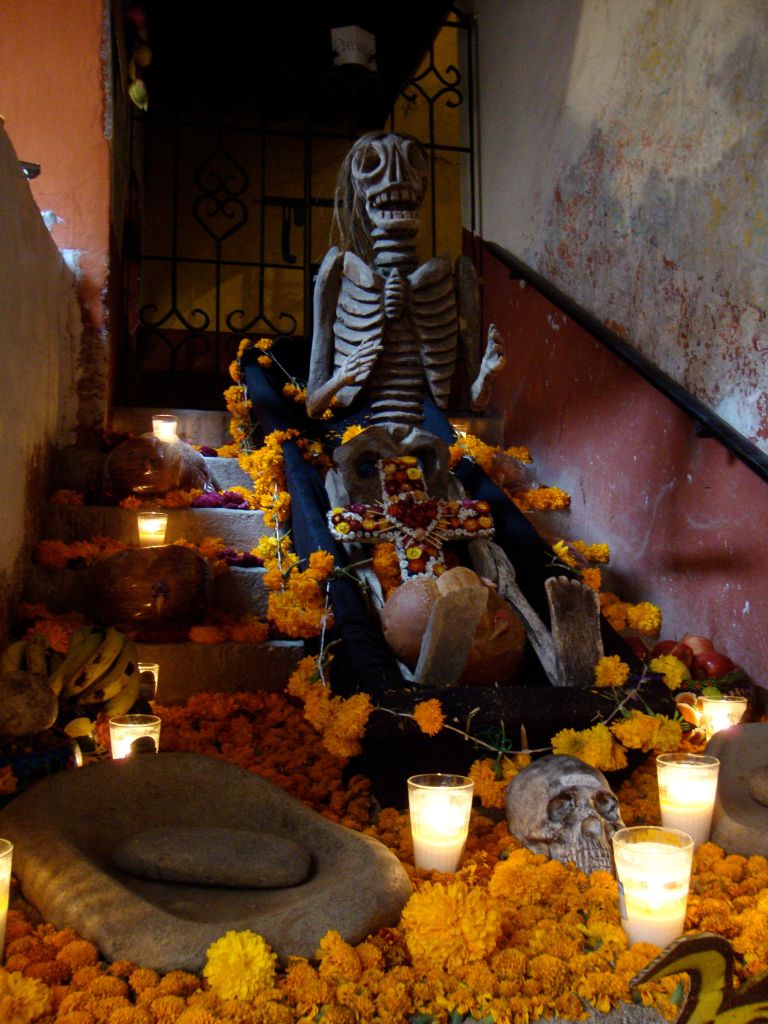
Marigold Flowers
Marigold flowers hold a significant role in Día de Muertos celebrations. The scent of these striking yellow and orange flowers is thought to guide the spirits of the departed to their altars. They are also referred to as cempasuchil, which translates to “twenty flowers” in Nahuatl, the language of the Aztecs.
Aside from that, marigold flowers hold symbolic importance. They signify the delicacy and loveliness of life, as well as the transient quality of existence. By including marigold flowers in Day of the Dead festivities, individuals pay homage to the memory of their departed loved ones while also rejoicing in the cycle of life and death.
Marigolds are so interconnected with the Day of the Dead that they are sometimes referred to as the flor de muerto or flower of the dead. As Dia de Muertos draws closer, you’ll see local markets in Mexico begin to stock marigolds in massive quantities as folks begin decorating for the festivities. It is common to see marigold petals decorating ofrendas and graves in addition to bunches of marigold flowers!

Sugar Skulls
Sugar skulls are one of the most famous symbols associated with the Day of the Dead festivities.
These skulls are crafted from sugar, which is molded into the shape of a skull and then adorned with vibrant icing and other decorations.
The custom of creating sugar skulls can be traced back to the 18th century in Mexico, where they were used to embellish ofrendas (altars) during the Day of the Dead.
The skulls are intended to represent the departed loved ones, and their intricate designs and bright colors are meant to rejoice in their lives rather than mourn their passing. The patterns on sugar skulls can differ widely, but they frequently feature flowers, hearts, and other emblems of life and death.
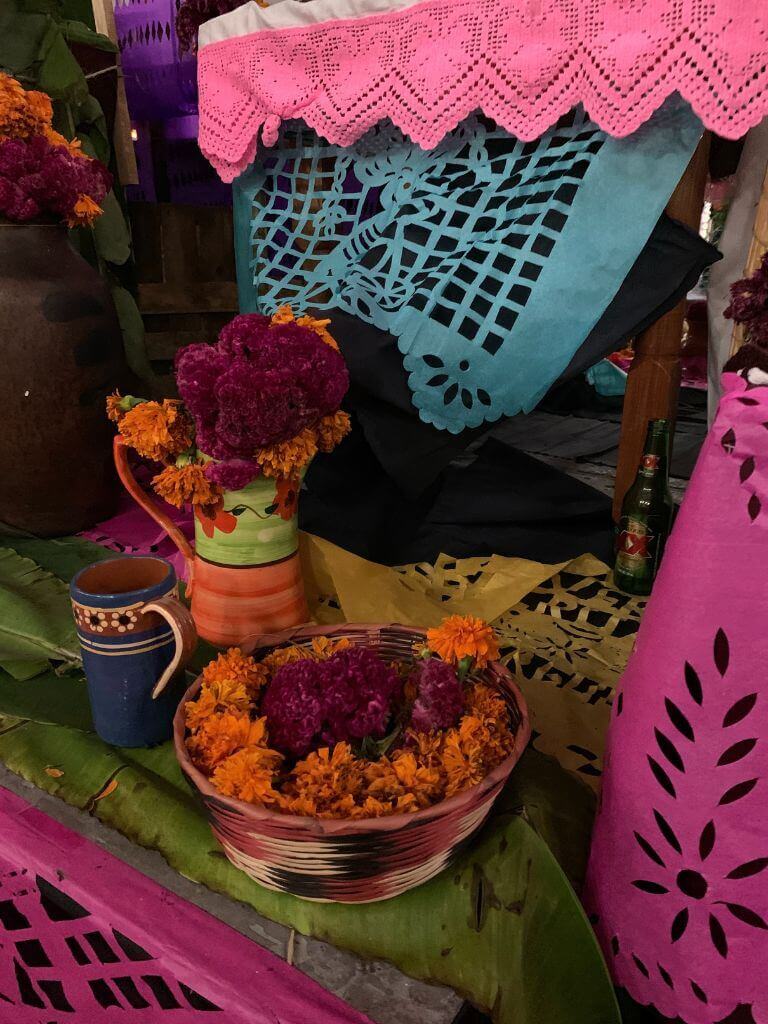
Papel Picado
If you have ever been to or seen a Day of the Dead celebration, you have probably seen papel picado. This intricate and colorful craft is a defining characteristic of the holiday, and it is easy to understand why. Papel picado is created by cutting detailed designs into tissue paper, resulting in a delicate and stunning decoration.
You can hang it from the ceiling or walls, or use it as a table runner. Some people even place papel picado on the graves of their loved ones during the holiday.
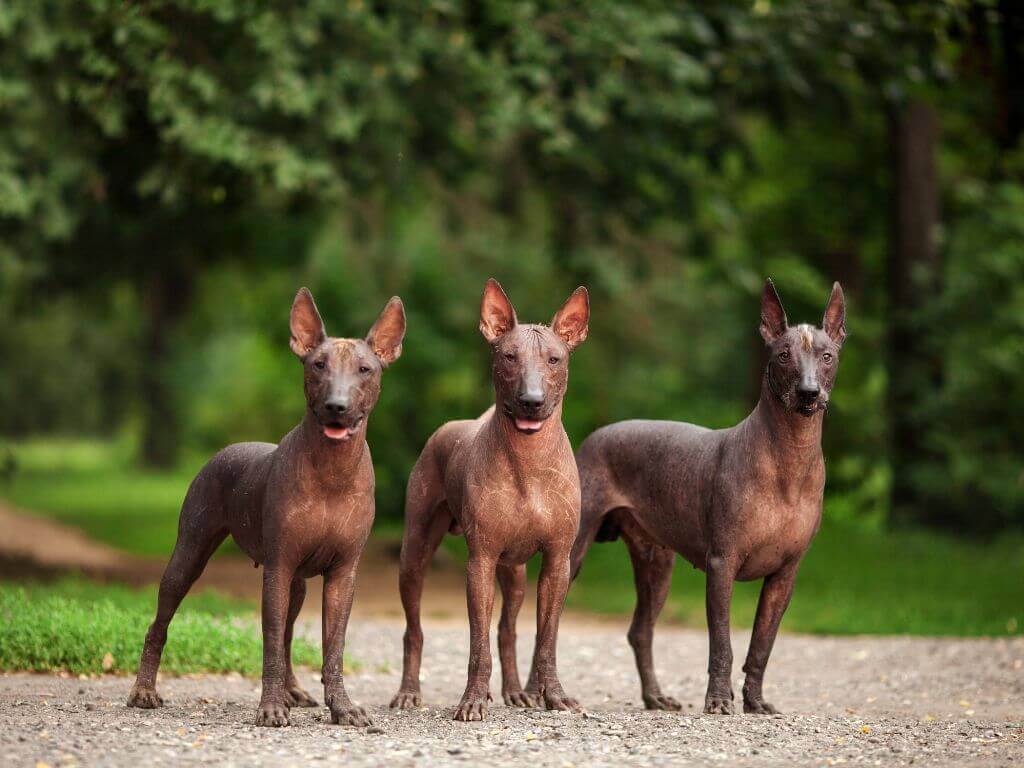
Xoloescuincle
Xoloescuincle is an ancient breed of dog that has a rich history in Mexican culture and is often associated with the afterlife.
The Xoloescuincle, also known as the Mexican Hairless Dog, is believed to have been bred by the Aztecs for usage in religious rituals. They were thought to possess healing abilities and were frequently sacrificed and buried with their owners to guide them in the afterlife.
These days, the Xoloescuincle is a cherished dog breed in Mexico and is frequently portrayed in Day of the Dead artwork. They are usually depicted with their tongues sticking out, which is said to symbolize their capacity to lead the spirits of the deceased to the underworld.

Catrinas
Catrinas are another super popular Day of the Dead motif and definitely a favorite! Catrinas are female skeletons wearing fancy dresses and hats, and they’re one of the most recognizable symbols of the date.
The Catrina has become an emblem of the holiday because it represents the notion that death is not something to be dreaded but instead embraced as a natural part of life. The Catrina serves as a reminder that even in death, we can still exhibit elegance and beauty.
Aside from being a prevalent symbol in Day of the Dead festivities, the Catrina is also a popular subject for Mexican artists.
Many artists create their own interpretations of the Catrina, often integrating elements of their own culture or individual style. The printmaker José Guadalupe Posada is a Mexican artist who is often credited with bringing the Catrina caricature to prominence in Mexican culture with his work La Calavera Catrina. The artist Diego Rivera created his own iterations of catrinas, likely inspired by Posada’s well-known work.

Pan de Muerto
Pan de Muerto, also known as the bread of the dead, is a customary type of sweet bread that is frequently consumed during the Day of the Dead festivities in Mexico.
This bread is typically formed like a circular loaf with dough strips on top that signify bones. The bread is frequently garnished with sugar and is sometimes flavored with anise or orange blossom water.
Pan de Muerto is not just a delicious dessert, but it also holds significant meaning during the Day of the Dead celebrations. The bread is frequently placed on the altars that are established to honor departed loved ones. The bread symbolizes the body of the deceased, and the dough strips on top represent bones. It is believed that by eating the bread, you are sharing a meal with your loved ones who have passed away.
Mictlan
Mictlan is the name given to the underworld in Aztec mythology. It is believed to be the place where the dead go after they pass away. Mictlan is ruled by the god Mictlantecuhtli and his consort Mictecacihuatl.

Monarch Butterflies
Monarch butterflies are a representation of the journey the deceased take to the afterlife and are believed to transport the spirits of the departed to their ultimate resting place, making them a super important Day of the Dead motif!
The vivid orange and black hues of the monarch butterfly are considered to represent the sun and the darkness of the underworld. The intricate designs on their wings are also believed to symbolize the complex journey of the soul in the afterlife.

Altars
Altars play a crucial role in Day of the Dead festivities. They are constructed to pay homage to the departed and invite them back to the realm of the living.
They’re known as “ofrendas” in Mexico and are usually embellished with a variety of offerings, such as water, traditional foods, fruit, salt, bread, and flowers.
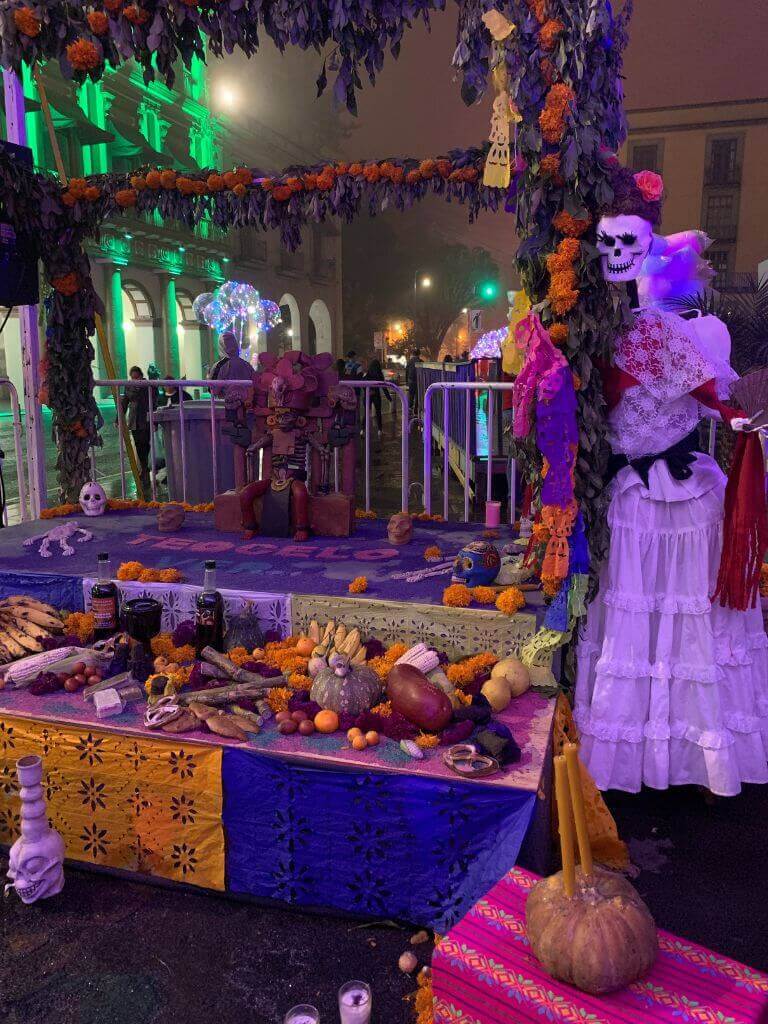
Many people place altars in their homes to welcome their loved ones at this time of the year, but you can also see them outside in cemeteries and main squares in plenty of cities and towns in Mexico. If you want to go all in, you can choose to celebrate Day of the Dead in Mexico City, where they also host a giant altar in the main square!
Home altars are often decorated with favorite items of a family’s deceased loved ones. This could be anything from favorite toys to particular food items, photographs, and more.

Water
Water is a vital aspect of existence, and it is also a crucial component of Day of the Dead altars. A dish of water is usually placed on the altar to fill the thirst of the spirits following their lengthy voyage to the living world. The water is also utilized to cleanse and purify the spirits.
Fruit
Another prevalent offering discovered on Day of the Dead altars is fruit. Fruits like oranges, apples, and bananas are used to represent the sweetness of life. The vivid hues of the fruit also contribute a lively touch to the altar.
Salt
Salt is used to represent the continuance of life. It is said that without salt, life cannot exist. A small dish of salt is usually set on the altar to make sure that spirits continue to live on.
Bread
Bread, or pan de muerto, is a customary sweet bread that is cooked and positioned on the altar. The bread is formed like a skull and embellished with sugar to create the impression of bones. The bread symbolizes the cycle of life and death.
Flowers
Flowers are another fundamental component of Day of the Dead altars. Marigolds, or cempasúchil, are the most frequently employed flowers. Their vibrant orange hue is believed to symbolize the sun and lead the ancestral spirits back to the realm of the living. Other flowers, such as roses and lilies, are also utilized to embellish the altar.
Mexico Travel Planning Resources
🌡️ Do I need travel insurance?
Yes! Healthcare in Mexico is affordable for minor ailments, but travel insurance will give you peace of mind if an emergency arises. Plus, you can add coverage for trip interruption, theft, etc. Get a quote from SafetyWing.
🏨 What’s the best way to find accommodation in Mexico?
I use a mix of Booking, Airbnb, and Hostelworld.
Booking.com is awesome for booking hotels and resorts, Hostelworld is great for hostels, and Airbnb specializes in apartment rentals, making it a great place to find long-term stays.
💸 How should I exchange money in Mexico?
Use local ATMS to withdraw cash. US travelers should open a Charles Schwab bank account because they’ll refund ATM fees at the end of the month.
Travelers from outside the US should open a Wise account to secure the best currency exchange rates.
📱 Where can I buy a local SIM card in Mexico?
Pick up a Telcel SIM card at any convenience store. Or, buy an Airalo eSIM online so you’re connected as soon as you land.
🗣️ Do I need to speak Spanish in Mexico?
No, but it definitely helps you feel more confident and connected.
RocketSpanish is my favorite program for learning the foundations of the language. If you’re more focused on improving your conversation skills, hire a tutor through iTalki to prep for your trip.
✈️ What’s the best way to find affordable flights?
I use Skyscanner because it makes it easy to compare rates across different travel days.
🚖 How do I find a safe airport transfer?
I recommend GetTransfer for airport transfers anywhere in Mexico.
🚗 What’s the best way to find rental cars in Mexico?
I recommend Discover Cars because they aggregate prices across rental car companies, making it easy to find competitive rates.
🚐 How do I book bus tickets online in Mexico?
Plan your routes with Rome2Rio, and book your tickets with Busbud — the site is in English and takes foreign credit cards. (Read more here)
🤿 How do I find cool activities and tours in Mexico?
I recommend Viator and Get Your Guide. Viator usually has more options, but it’s worth comparing offerings across both platforms.
🇲🇽 How can I experience Mexico like a local?
Solo female travelers can hire a local female guide through Greether. Greeters will tailor tours based on your interests— it’s basically like experiencing a destination with a local bestie!
🧳 What’s the best luggage for Mexico?
Unless you’re staying at a resort, a travel pack is recommended. I’ve used this one from Osprey for the last 8+ years.
👯♀️ How do I connect with fellow travelers in Mexico?
Join my Female Travelers in Mexico Facebook group, a supportive community of fellow Mexico travel enthusiasts, where you can find answers to all your travel questions!


